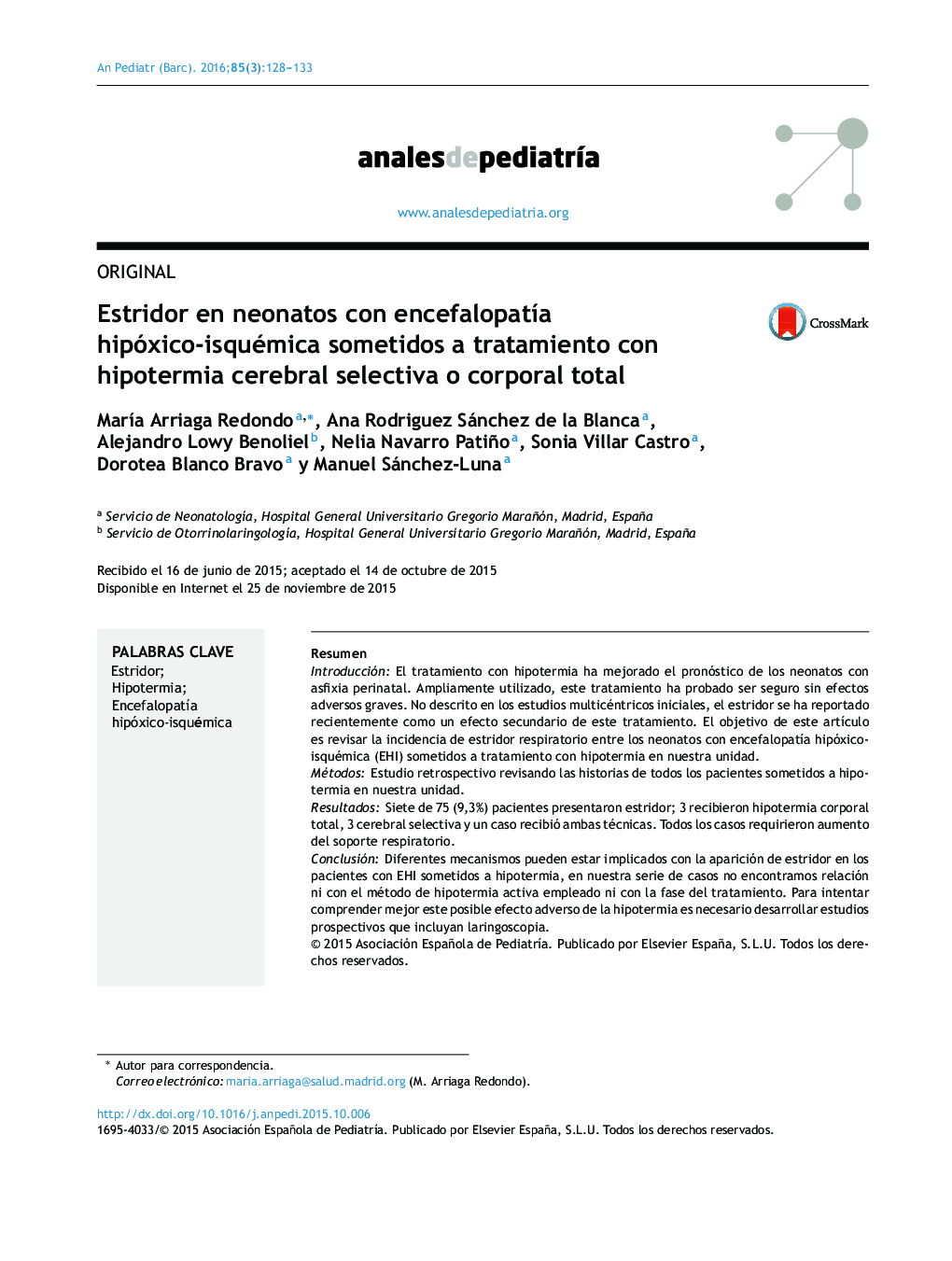| کد مقاله | کد نشریه | سال انتشار | مقاله انگلیسی | نسخه تمام متن |
|---|---|---|---|---|
| 4140835 | 1272303 | 2016 | 6 صفحه PDF | دانلود رایگان |

ResumenIntroducciónEl tratamiento con hipotermia ha mejorado el pronóstico de los neonatos con asfixia perinatal. Ampliamente utilizado, este tratamiento ha probado ser seguro sin efectos adversos graves. No descrito en los estudios multicéntricos iniciales, el estridor se ha reportado recientemente como un efecto secundario de este tratamiento. El objetivo de este artículo es revisar la incidencia de estridor respiratorio entre los neonatos con encefalopatía hipóxico-isquémica (EHI) sometidos a tratamiento con hipotermia en nuestra unidad.MétodosEstudio retrospectivo revisando las historias de todos los pacientes sometidos a hipotermia en nuestra unidad.ResultadosSiete de 75 (9,3%) pacientes presentaron estridor; 3 recibieron hipotermia corporal total, 3 cerebral selectiva y un caso recibió ambas técnicas. Todos los casos requirieron aumento del soporte respiratorio.ConclusiónDiferentes mecanismos pueden estar implicados con la aparición de estridor en los pacientes con EHI sometidos a hipotermia, en nuestra serie de casos no encontramos relación ni con el método de hipotermia activa empleado ni con la fase del tratamiento. Para intentar comprender mejor este posible efecto adverso de la hipotermia es necesario desarrollar estudios prospectivos que incluyan laringoscopia.
IntroductionHypothermia treatment has improved the prognosis of asphyxiated neonates. Widely used, it has demonstrated to be safe without severe side effects. The aim of this article is to review the incidence of stridor amongst asphyxiated newborns treated with hypothermia in our unit.MethodsRetrospective chart review of our patients.ResultsStridor was presented in 7/75 (9.3%) of patients during hypothermia. Three received whole body hypothermia, 3 selective cerebral, and in one case both techniques were used. All cases required increased respiratory support.ConclusionsDifferent mechanisms may be responsible for the appearance of stridor in patients with hypoxic-ischaemic encephalopathy (HIE). In our series the incidence of stridor was similar for the two hypothermia devices. To better understand these possible side effects of hypothermia, further prospective studies (which should include laryngoscopy) are needed.
Journal: Anales de Pediatría - Volume 85, Issue 3, September 2016, Pages 128–133